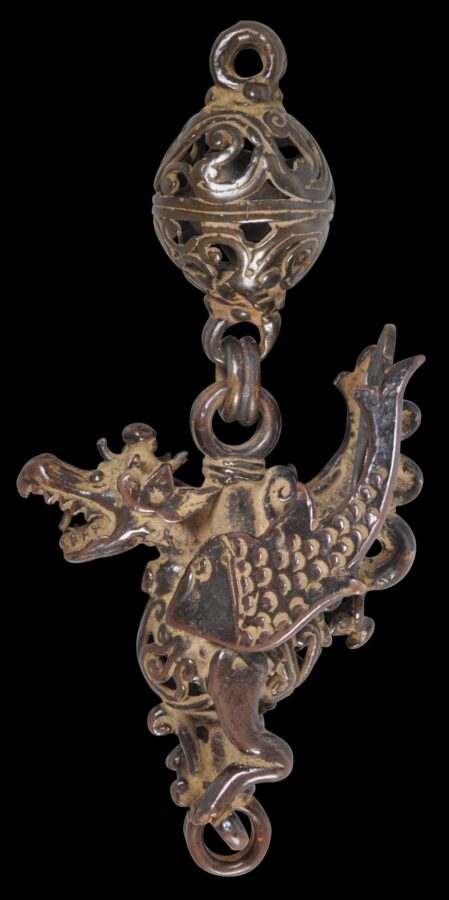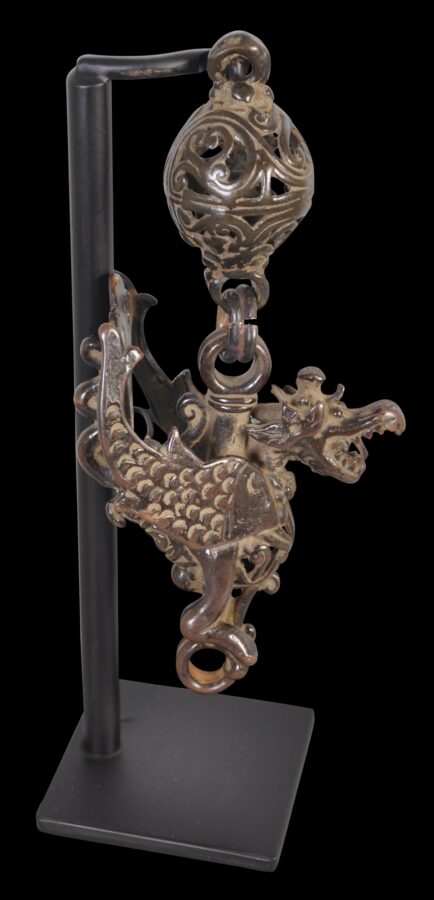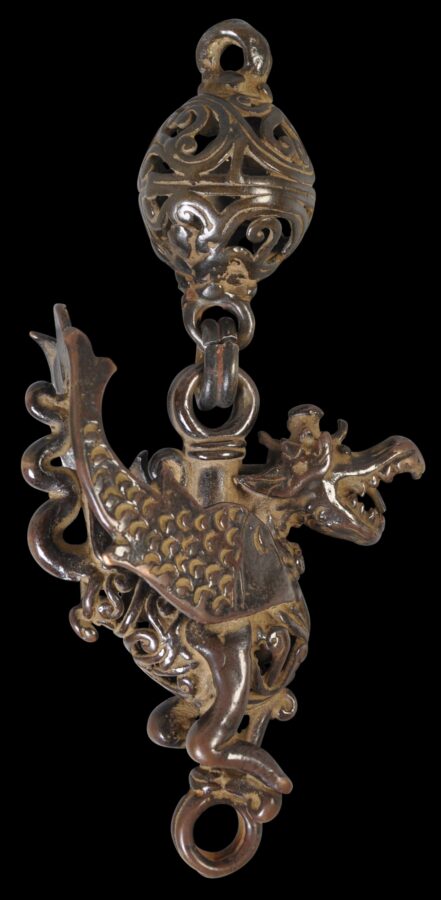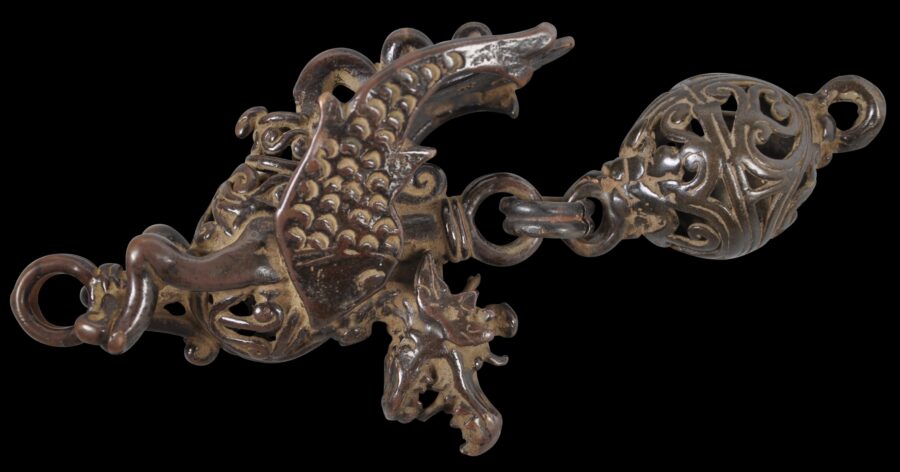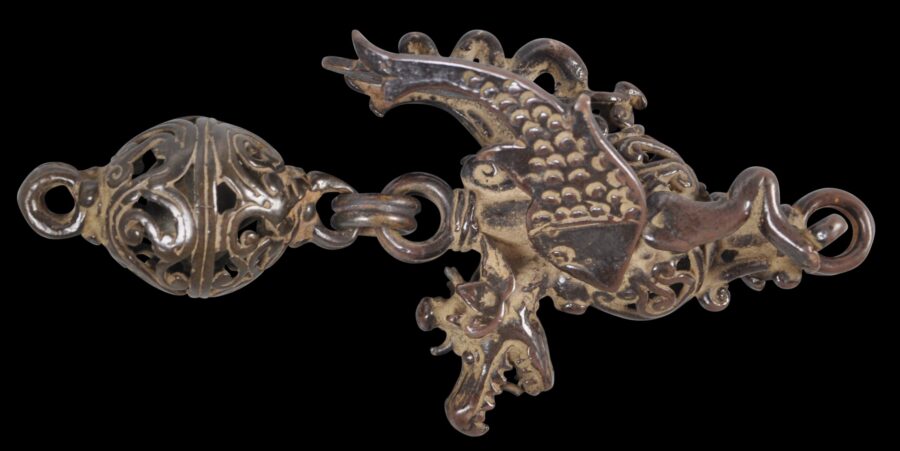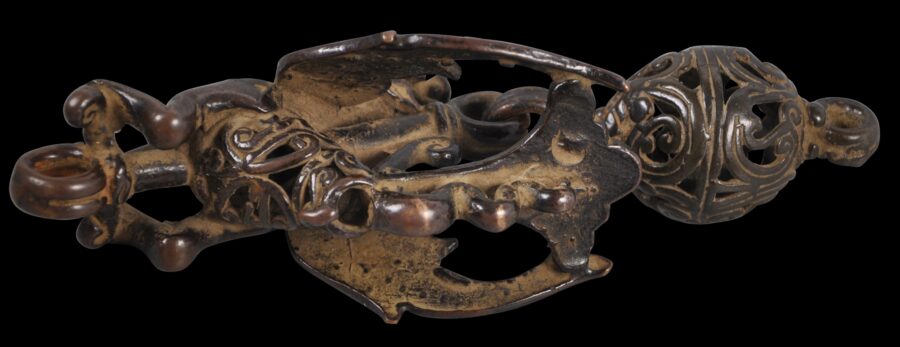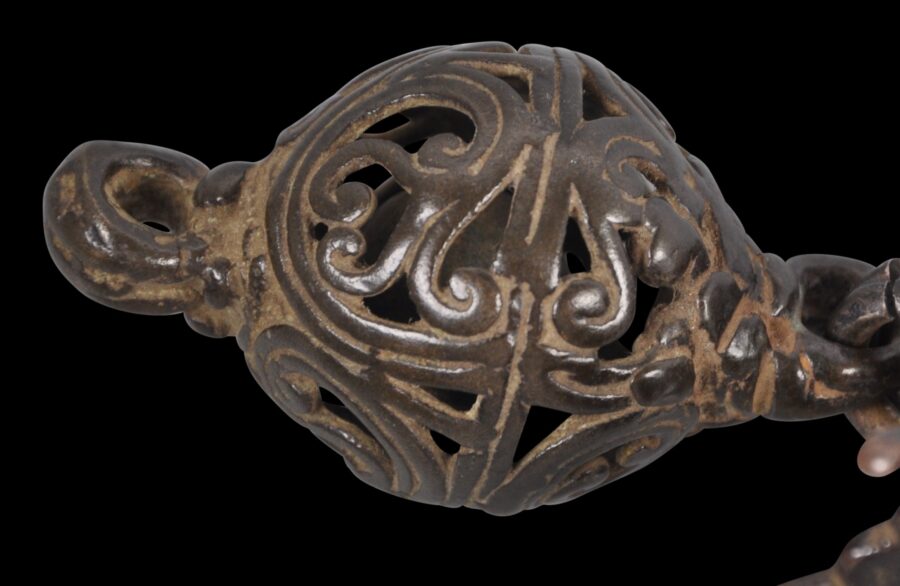This well-cast lamp segment has the most beautiful wear and chocolate patina. It is from Eastern Indonesia and dates to around the 14th century, and is of cast bronze. It would have been part of the suspension mechanism for a hanging oil lamp, possibly a lamp used to illuminate a wayang or shadow puppet performance.
It is in the form of a mythical Garuda bird (a common motif for wayang lamps themselves) suspended from a pierced sphere.
The wings of the Garuda have been cast as fish motifs. Fish are a common motif in many cultures used to denote prosperity and plenty probably because of their association with water, rainfall and the monsoon, which was so important for promoting bountiful harvests.
A similar example comprised lot 262, Christie’s South Kensington, ‘Oriental, Tibetan, Himalayan and Islamic Art from Spink’, 19-20 June, 1998.
The example here is accompanied by a custom-made black display stand.
References
Lerner, M., & S. Kossak, The Lotus Transcendent: Indian and Southeast Asian Art from the Samuel Eilenberg Collection, The Metropolitan Museum of Art, 1991.
van Lohuizen-de Leeuw, J.E., Indo-Javanese Metalwork, Linden-Museum Stuttgart, 1984.


